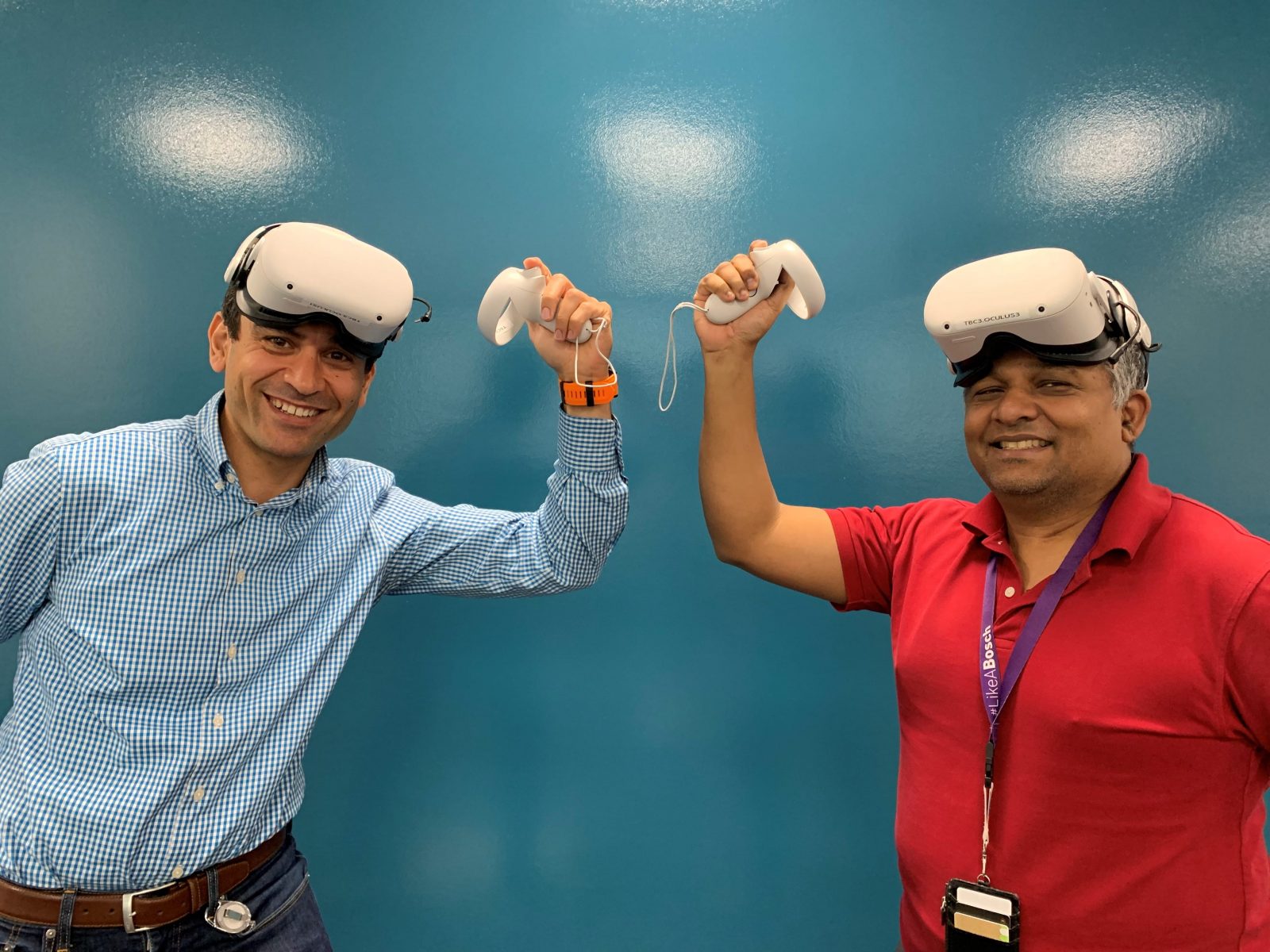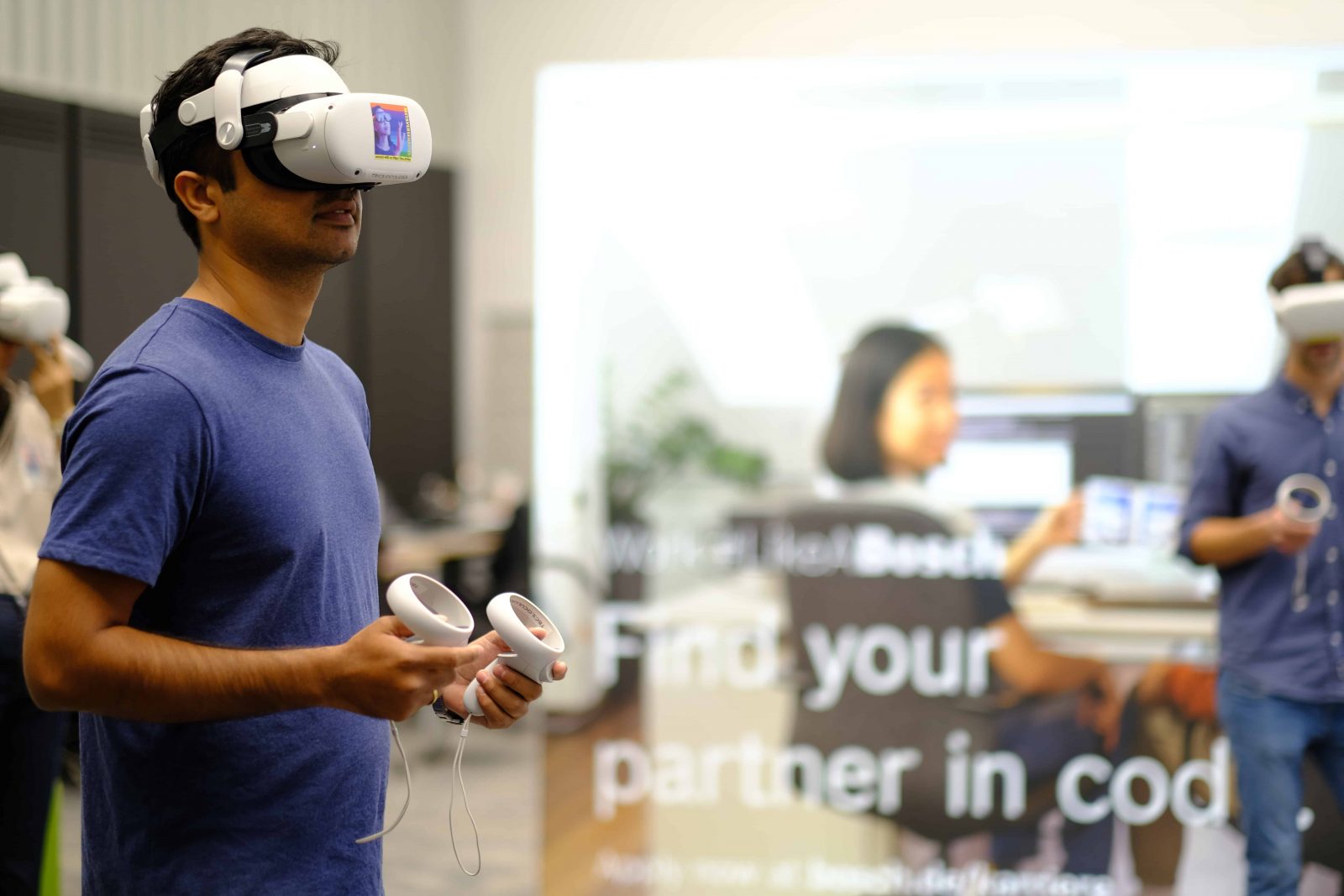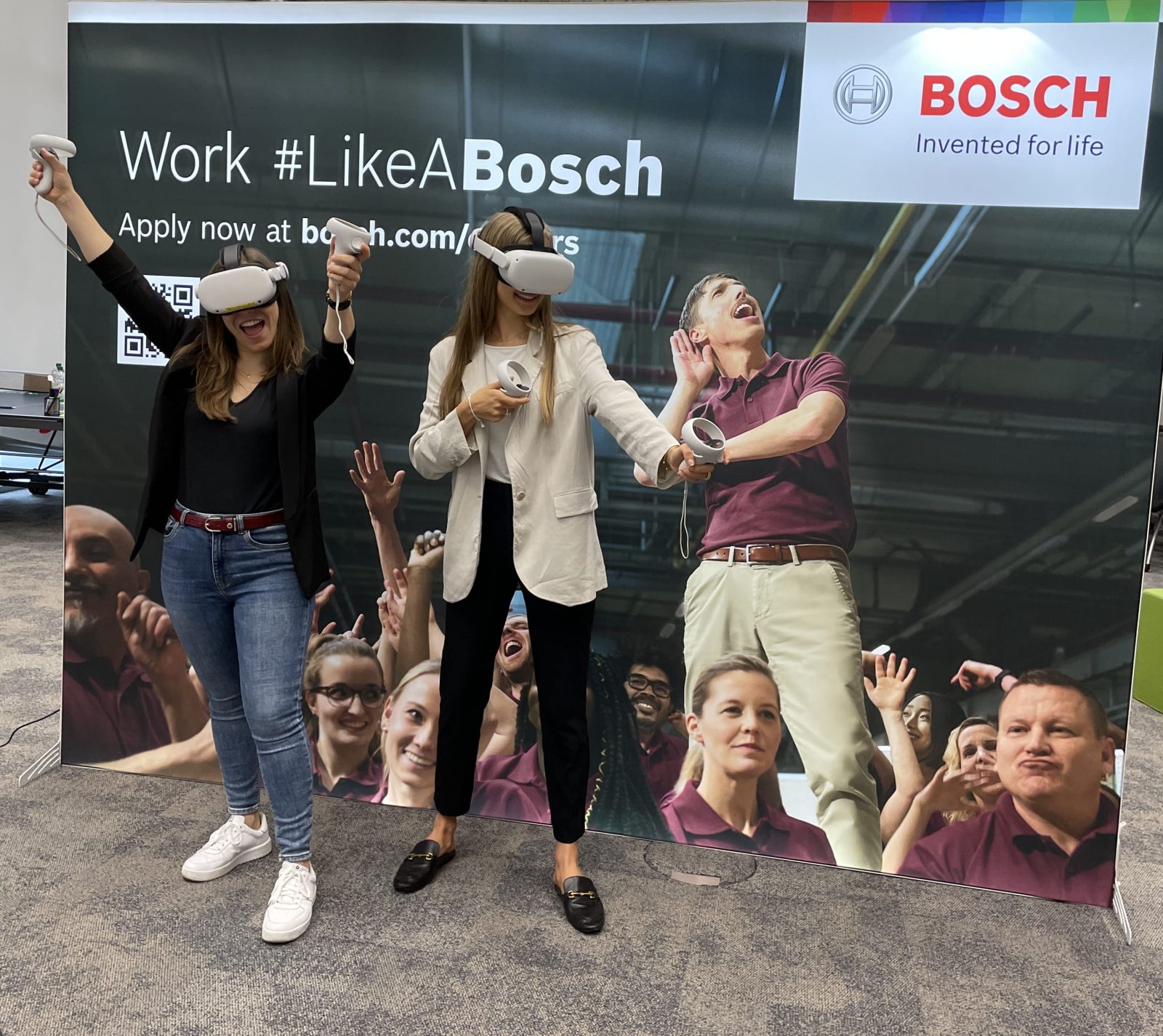What is the Metaverse and why should you get involved?
As humans, we are constantly striving to break new ground, innovate, and improve our lives. Since the 1990s, when the Internet was introduced to the mainstream, technology has been evolving at a faster rate with each passing year. Every few years, something new in technology captures everyone’s attention. Cloud, IoT and Machine Learning are some known examples here. Computational power and Networking speed have increased significantly and with the advent of IoT machine learning, the use of non-computer devices and sensors has now become the norm and is omnipresent. However, despite how far we’ve come, the primary interface to the digital world remains primarily a flat interface such as a monitor or mobile phone device. The Metaverse has the potential to drive this next wave of digital disruption. That concludes what the Metaverse is, read on to find out why you should get involved!
As with all technologies, they often abide by the hype cycle. For many, the Metaverse is still in its “Hype Phase”. However, unlike many other technologies in similar cycles in the past, the ingredients for building up the Metaverse already exist. This includes ever-increasing internet and Wi-Fi speed, GPU processing power, smaller and more efficient mobile processors and SOCs, nearly infinite scalable storage and cloud computing along with decades of industrial learnings as well as efficient sensors and cameras combined with sophisticated machine learning and AI models. All of this serves as the foundation for setting up the Metaverse.
We’ve been in big hype periods of one or more innovations over the years. These periods always brought new terms that are unfamiliar to us. You, besides millions of others, have probably wondered, “What is the Metaverse?”
 ©Bosch.IO
©Bosch.IO
Where do we come from?
Before we try to understand the Metaverse and where we’re going, we should look back at the beginning. The term “Metaverse” was coined by Neal Stephenson in his novel Snow Crash in 1992. He didn’t provide a clear definition but described it as a persistent virtual world that affects nearly every human existence. It should impact leisure, physical exhaustion, e-commerce and socializing. At this point in time, the Internet (we call it Web 1.0 today) was about to start, and there were less than 15 million internet users.
In the “Web 1.0” phase, we primarily used the Internet back then to find and consume static information. The Internet was read-only for the masses at this point, because only a small number of people created content. The vast majority of Internet users were simply consumers.
While “Web 1.0” focused on reading, “Web 2.0” started early in 2000 with the changed focus on contribution. The Internet audience was growing, requiring more people to create content for this wider public. Web content became dynamic, opening up a new world for every user.
“Web 2.0” gave us a first impression of a Metaverse-like experience. There were attempts to create a virtual world in various shapes and forms, with Second Life being the most similar to what we experience today. Second Life, which debuted in June 2003, is an online multimedia platform that allows users to create an avatar of themselves and interact with other users, places, and objects in a multiplayer virtual world. In 2004 Blizzard Entertainment
released World of Warcraft, where players can build and own their world. Many multi-player games also were released. AR/VR came to the market and brought the immersive experience to another level with many wearables. As of today, it became partially possible to experience what Stephenson wrote in his novel.
The Metaverse in a nutshell
To date, no uniform definition of the Metaverse exists in science. We can only make an educated guess of the definition, even though we know that the term “Metaverse” was not “invented” in recent years but returns to the novel written by Neil Stevenson in 1992.
From an etymological point of view, we could point out that μετά in Greek means “post” while verse stands for “universe” or “version”. Even with such a quick and unpretentious analysis, we could understand the direction of the term.
Another basis for our definition-building process could be pop culture and science fiction. When we think of an experience that combines the digital and the real world, we immediately think of “The Matrix”. Other examples include the films “Ready Player One” and “Tron” which depicts the internet as an “information superhighway” of bits.
As Matthew Ball explains in his essay “The Metaverse: What It Is, Where to Find it, and Who Will Build It” , he defined the Metaverse as “[a] massively scaled and interoperable network of real-time rendered 3D virtual worlds that can be experienced synchronously and persistently by an effectively unlimited number of users with an individual sense of presence and with continuity of data such as identity, history entitlements, objects, communication and payments.” (Ball, M. 2020)
Matthew Ball also identified core attributes to characterize the Metaverse:
- Persistent – it will never pause, reset itself or end, it will be always accessible
- Synchronous and live – it will be consistent, exist and live in real-time regardless of whether there is a pre-scheduled event, or not
- Concurrent – several individuals and businesses can be part of it and operate simultaneously in a specific event or place in parallel
- A functioning economy – individuals and businesses can create, own, buy and sell assets and get paid for a wide range of work and value within the Multiverse
- Immersive – it will provide an interactive experience that will span across the digital and physical worlds
- Interoperable – it will offer exceptional interoperability of data, digital assets and content across m worlds and experiences
- Open to contributors – content will be created by everybody interested, from independent individuals and informally or formally organized groups to commercial or non-commercial businesses (Ball, M. 2020)
 ©Bosch.IO
©Bosch.IO
The above listed characteristics are still not as widely accepted. Some articles refer to the Metaverse as a “virtual world,” but this is nothing new; virtual worlds as part of games have existed for many years. The Metaverse cannot be equated to “virtual reality,” as VR is simply a method of experiencing a virtual world, or to “virtual economy,” as people have been sending and receiving digital item transactions via digital marketplaces for at least a decade. All these examples demonstrate that the Metaverse cannot be easily simplified and reduced, which reminds us not to underestimate the enormous potential of the entire Metaverse concept.
Similarly, the Metaverse will be the evolution of the Internet. It will enhance our creativity while strengthening our digital ownership. It will be a convergence of our physical lives, but virtually enhanced, and a purely digital reality, creating an immersive experience centered around a wide range of activities. This will be accomplished through the use of technologies such as virtual reality, augmented reality, artificial intelligence, cloud computing, social media, online gaming, 5G/6G networks, and potentially blockchain. Still, the language used to express what the Metaverse will be is primitive, reminiscent of how people attempted to explain the Internet in the early 1990s.
 ©Bosch.IO
©Bosch.IO
Outlook
Technology frequently surprises the public even though the most significant developments are often predicted years in advance. The Metaverse will not appear immediately, there will be no point in time that is called pre-Metaverse or post-Metaverse. Instead, it will emerge gradually over time as various products, services, and capabilities connect and merge. If we consider how quickly the Internet has evolved from static pages to dynamic content, social media, and mobile connectivity, the Metaverse’s evolution could be even faster. As the Metaverse market develops, it will bring numerous commercial opportunities for businesses of all sizes but also for our personal lives, as the web did.
The establishment of the Metaverse will have a significant impact on entire business models, product and service portfolios. As a result, many current established corporates are likely to lose their seats at the table. New brands, startups and corporates will rise to handle everything from financial transactions to proof of identity, talent acquisition, employee training, content production, safety and many more use cases.
But we’re not there yet. We can currently enter Metaverse platforms and share our experiences with others, but we are still far away from the full potential. Currently, the landscape is made up of small realms of metaverses. Everything from Microsoft’s Mesh, Meta’s Horizons, Roblox, Fortnite, Descentraland and many others are pocket multiverses which have no or little connection to each other.
Although the Metaverse comes up short of science fiction expectations, it is likely to generate around $1.5 trillion in value by 2030. Even now, user spending in this direction is steadily increasing. In 2021, gamers will have spent approximately $100 million on virtual goods. Every year, the number of AR and VR users grows. According to Artillery Intelligence, 41 million units will be used in 2022, with 88 million expected in 2025. (https://artilleryiq.com/reports 2021)
Furthermore, major technology companies are investing millions of dollars in Metaverse projects. Even if you are not a key player yet, but rather a participant in the process – if the Metaverse is indeed the successor to the Internet, the value of investing now will yield a massive economic profit in the future. And this is what all major technology corporations believe.
Certainly, there are advantages for us, the consumers too. The Metaverse will also enable people who live in more remote areas to participate in events all over the world, as well as engage in more profitable economies through virtual labor. The diverse range of Metaverse experiences will break down barriers, enhance social cohesion, provide access to education, and provide a more equal starting point for everyone.
 ©Bosch.IO
©Bosch.IO
Summary
In conclusion, although we are still in the initial phases of the Metaverse, it will continue to grow rapidly to trillions in value. Therefore, it is obvious that the opportunities of the Metaverse cannot be simply disregarded. Nevertheless, the Metaverse should not be used to replace the physical world or the face-to-face interactions that we enjoy today. In contrast, the Metaverse should enhance our personal and professional life and enable free flow between both the physical and digital worlds in a way that broadens rather than limits our choice of experiences, such as digital and on-site meeting spaces.
If we do not respond to the Metaverse opportunities today, we will encounter ourselves trying to do business in environments formed by and made for other actors. Therefore, we need to experiment with use cases, co-create, upskill talents and invest in the hardware and software to actively shape this future and become familiar with it.
See you soon in the Metaverse!
Want to know more?
 ©Bosch.IO
©Bosch.IO
References
Ball, Matthew (2020): “The Metaverse: What It Is, Where to Find it, and Who Will Build It” essay, the Metaverse is; https://www.matthewball.vc/all/themetaverse
